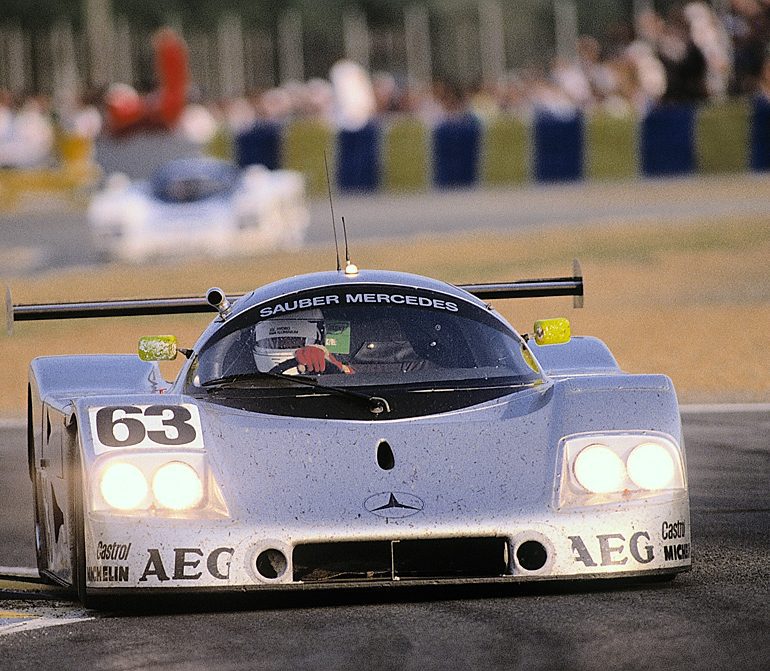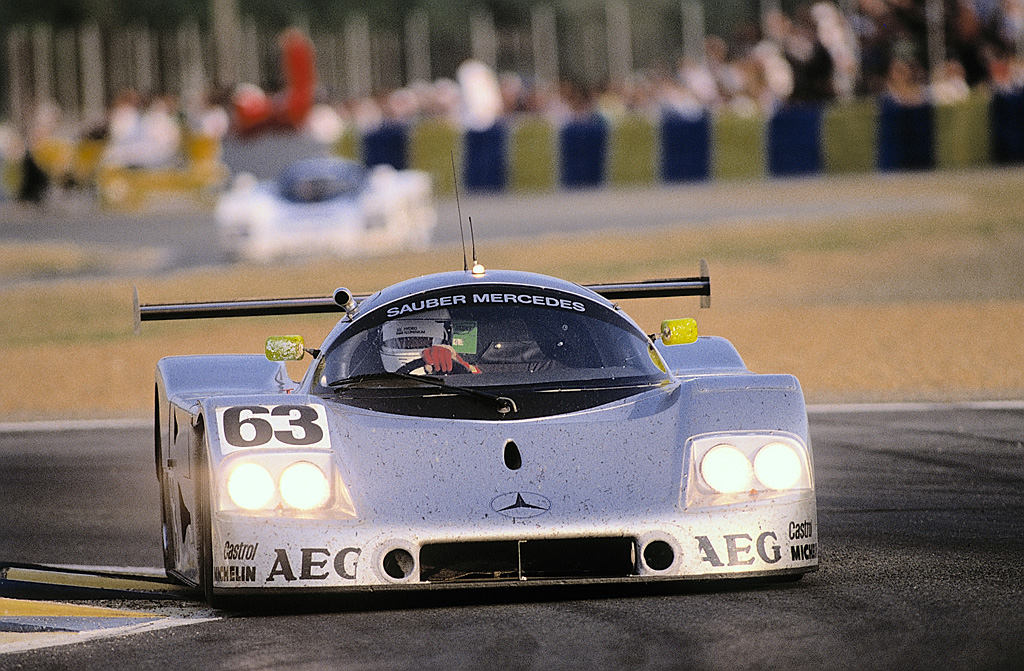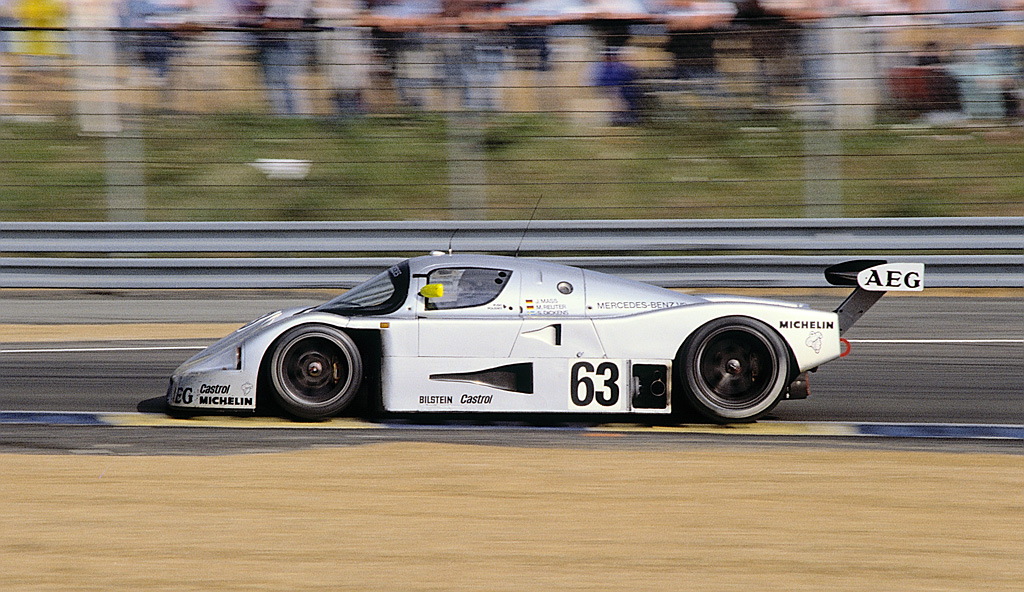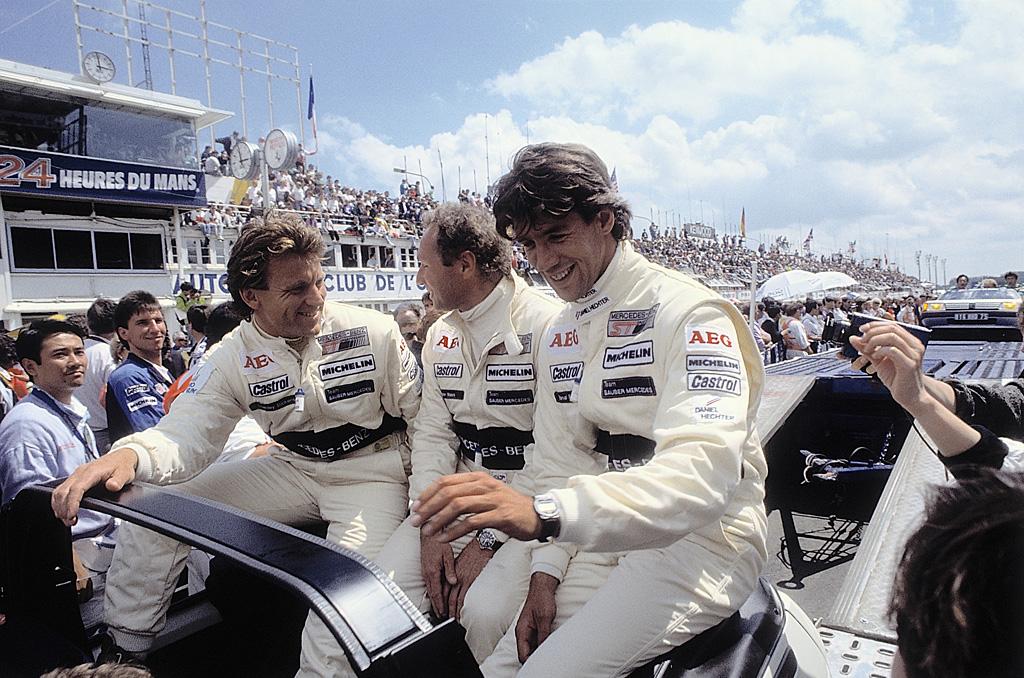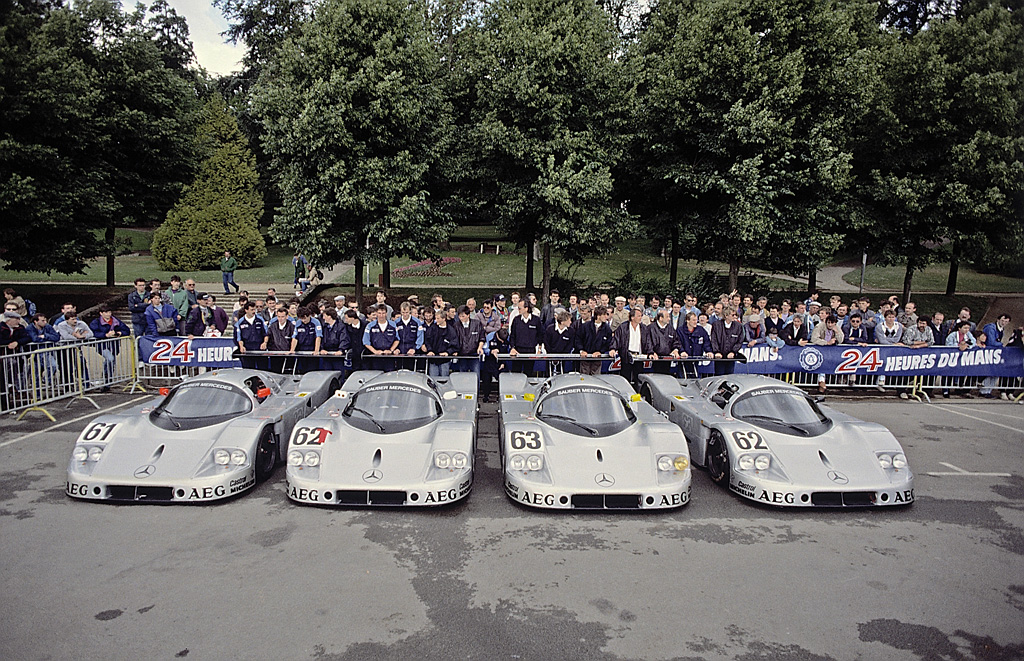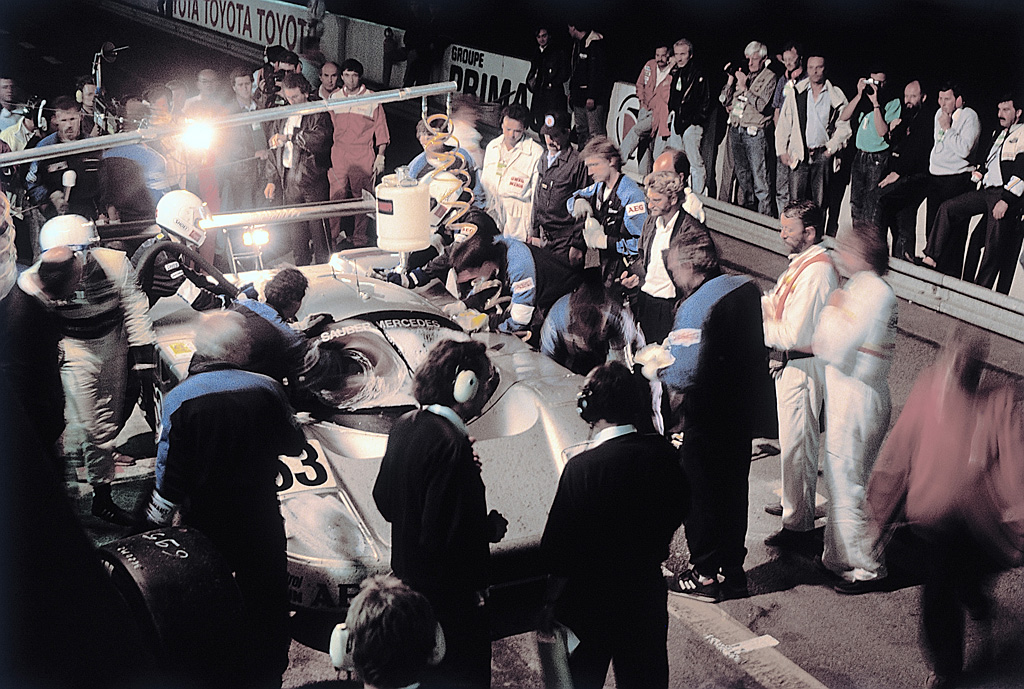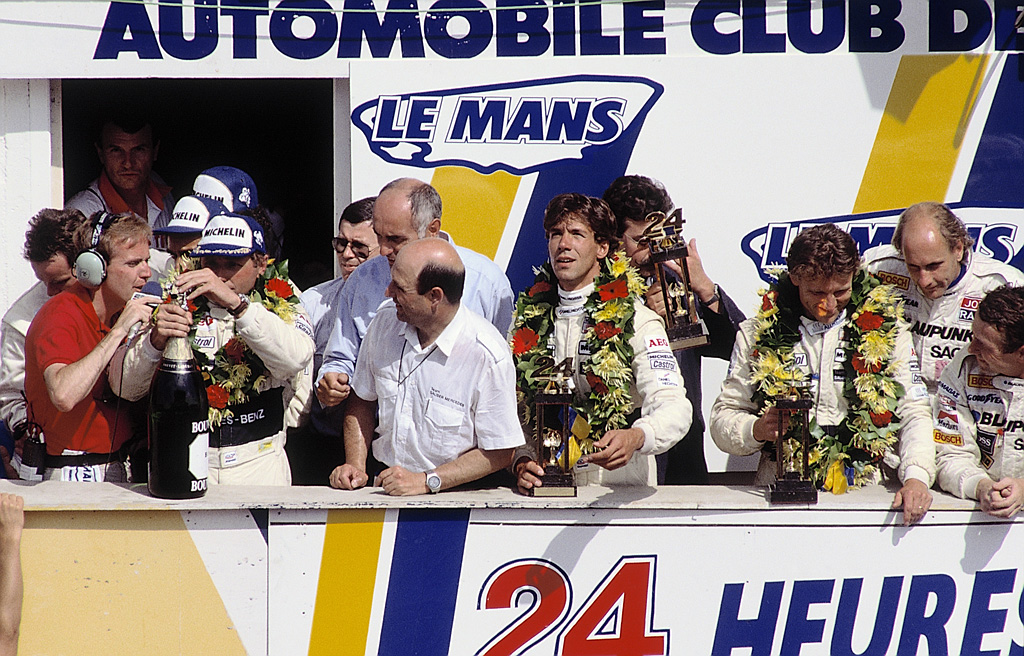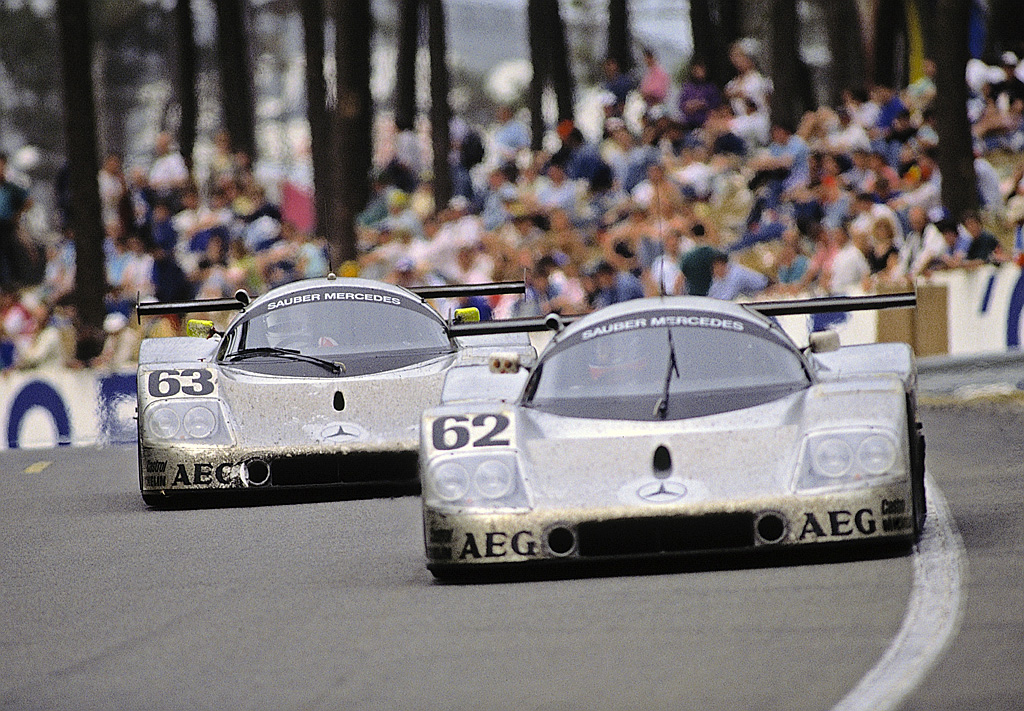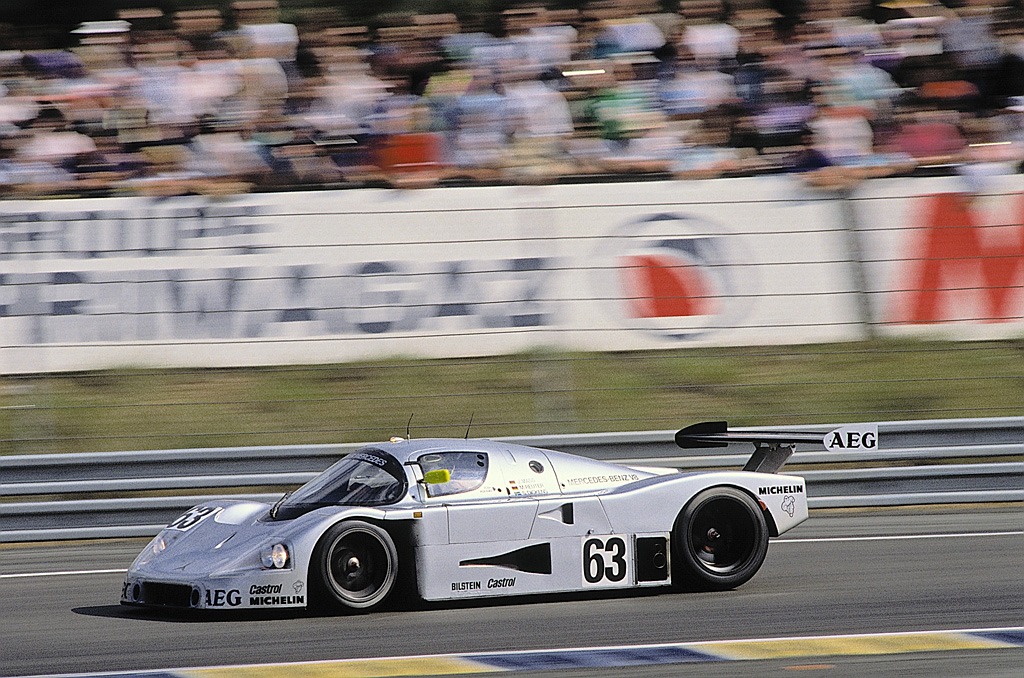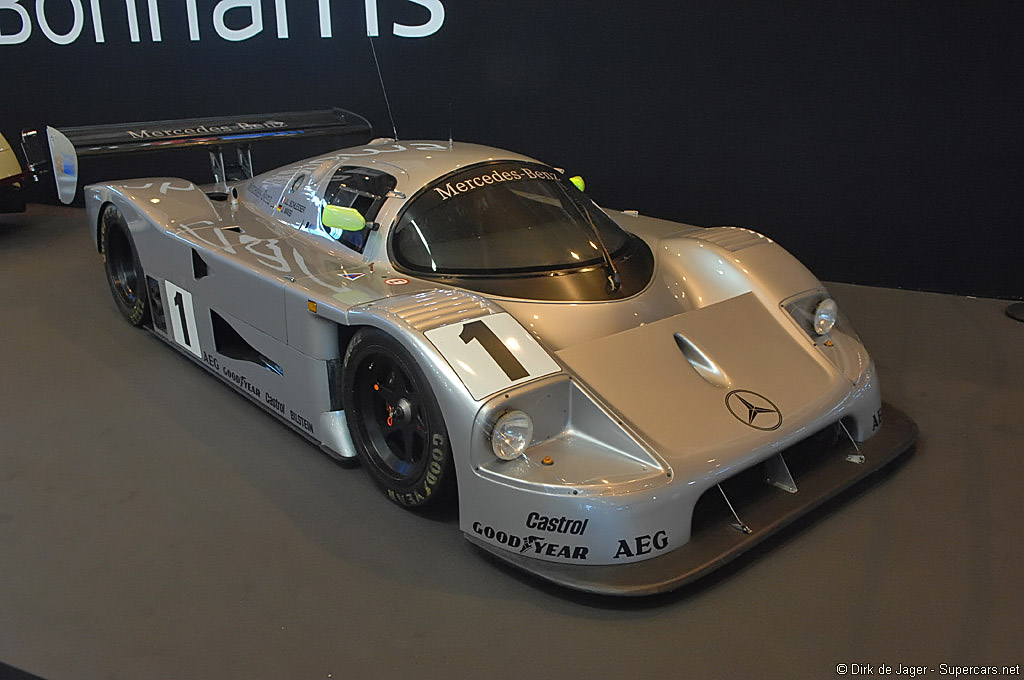1987→1989 Sauber-Mercedes C9
After a 30 year hiatus from endurance racing due to the 1955 tragedy at Le Mans, Mercedes thought enough time had passed to win there again. Drivers Jochen Mass, Manuel Reuter and Stanley Dickens won the 1989 24 Hours of Le Mans outright in their Sauber-Mercedes C9.
It was a good day for both Mercedes-Benz and Sauber. The winning number 63 car finished ahead of its sister car driven by Mauro Baldi, Kenny Acheson and Gianfranco Brancatelli. Two laps behind was the third-place Joest Racing Porsche 962C; a car which had won at Le Mans six previous times.
The Sauber C9 was a Group C prototype that debuted in 1987 season. It was developed from a series of Le Mans Prototypes by Peter Sauber. The underpinnings of the C9 were an all-aluminum monocoque with a rear steel subframe for the Mercedes-Benz engine.
Due to fuel restrictions at the time, the engine was made as efficient as possible. The production-based block was developed by Swiss engineer Heini Mader. It had a peak power of 720 bhp, but the unit was limited to 650 or less to conserve fuel.
During the development year in 1987, the cars were fielded by Kouros Racing with little success. Once Mercedes-Benz made it an official team in 1988, five victories were scored despite heavy pressure from the Silk Cut Jaguar team.
In 1989, the car was developed to its ultimate specification including a new DOHC-head M119 V8 engine. That season, the C9s dominated at every race, winning outright at all but one event. At the 24 Hours of Le Mans, a record was set at 247 mph (398 km/h) on the Mulsanne Straight.
After the string of successes including winning the 1989 World Sports Car Championship, Autosport declared the C9 as their Racing Car Of The Year. The team moved on and replaced the model with the C11 of 1990.
In Detail
| submitted by | anonymous |
| type | Racing Car |
| production years | 1987 – 1989 |
| production | 6 |
| succeccesor | 1990 Sauber-Mercedes C11 |
| engine | Mercedes-Benz M119 90º V8 |
| position | Mid, Longitudinal |
| aspiration | Twin KKK Turbochargers |
| block material | Aluminum |
| valvetrain | DOHC, 4 Valves per Cyl w/VVT |
| displacement | 4973 cc / 303.47 in³ |
| bore | 96.5 mm / 3.8 in |
| stroke | 85 mm / 3.3 in |
| compression | 8.5:1 |
| power | 484.7 kw / 650 bhp @ 7000 rpm |
| specific output | 130.71 bhp per litre |
| bhp/weight | 718.23 bhp per tonne |
| torque | 810 nm / 597.4 ft lbs @ 3500 rpm |
| body / frame | Aluminum Tub Monocoque w/Steel Rear Subframe |
| driven wheels | RWD |
| front brakes | Internally Ventilated Discs |
| rear brakes | Internally Ventilated Discs |
| f suspension | Double Wishbones |
| r suspension | Double Wishbones |
| curb weight | 905 kg / 1996 lbs |
| wheelbase | 2700 mm / 106.3 in |
| front track | 1600 mm / 63.0 in |
| rear track | 1550 mm / 61.0 in |
| length | 4800 mm / 189.0 in |
| width | 1980 mm / 78.0 in |
| height | 1070 mm / 42.1 in |
| transmission | 5-Speed Manual |
| top speed | ~398 kph / 247.16 mph |
Auction Sales History
1989 Sauber-Mercedes-Benz C9-05 – did not sell for €1,250,000
The car, chassis number five, took the 1989 World Sports Car Championship, and is the only model of the six likely to be offered for sale. Three of the other cars belong to the Mercedes Museum, one resides at Sauber and one at a private American collection.
The car also holds the record for the highest recorded speed during an officially timed race. It reached 253mph (407kph) with Jochen Mass at the wheel. It is currently ready to enter Group C historic motorsport events
Auction Source: 2008 Retromobile


